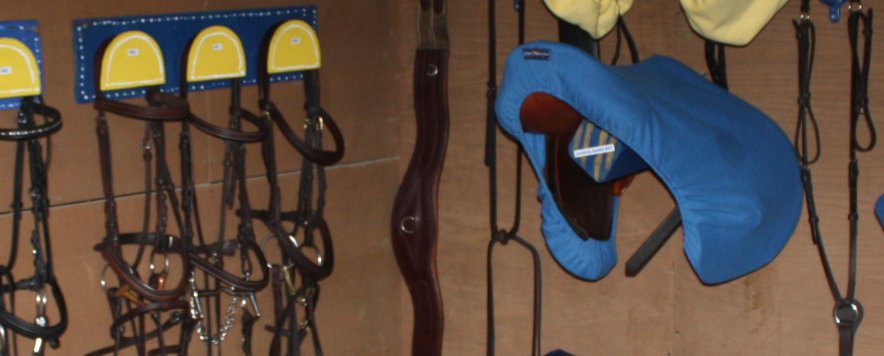Now that we know the names of all those pieces of leather and metal that make up a horse's tack, we need to know how to put them on correctly.
7. Tack up (may be assisted)
'May be assisted' means that for Horsemanship level 1 you should know the correct method of tacking up. If you have difficulty with a particular portion (typically bridling) the examiner may assist you and you won't lose marks as long as you can describe the procedure.
This is an excellent video on saddling. Note that she's using a dressage saddle, which has longer billets and a shorter girth than the all-purpose and jumping saddles we use in the Mounted Combat program, but other than that, everything else is the same.
The second video shows how to put the bridle on. She uses the arm under the nose method, whereas I prefer arm over the poll. Both methods are equally valid, and are a matter of personal (and horse) preference.
I really like these videos. They are an excellent review, even for those of you who have moved on past levels 1 and 2. And for those of you who are Intro to Mounted Combat assistants, or working towards teaching certification they are a great example of how to teach tacking up.
Common Errors
These are the things we notice most often in doing assessments or tack check:
- Saddle pad on backwards or upside down. The keeper straps go on the outside, and nearer the horse's front. If the pad has no straps it is usually slightly shaped so it is higher at the withers, and the cleaner side goes up.
- Saddle too far back. It's uncommon to see the saddle too far forward, as it tends to naturally slide into place during girthing, but we quite often see a saddle placed too far back, so the girth is getting towards the belly rather than right behind the elbow, and the back of the saddle is pressing on the horse's loins
- Girth not through keepers. If your saddle pad has them you should use the girth keepers or the billet strap keepers (you don't need to use both, but tuck the billet keepers away if not using them) to keep the pad from slipping out from under the saddle.
- *Noseband outside of bridle.* This is probably the number one error. Make sure the noseband goes underneath the cheekpieces of the bridle, and don't forget to check both sides.
- Throatlatch too tight. There should be 3-4 fingers width, depending on the size of your hand, between the throatlatch and jaw. The throatlatch is only there to prevent the bridle from coming off if the horse rubs it, and should not be putting any pressure at all on the throat.
- Stirrups hanging loose. Make sure your stirrups are run up before leading the horse in hand. This prevents them from banging against his sides and startling him, or from getting caught going through a gate. If you need to wrap your stirrups for length and they can't be run up, simply cross them over the saddle.
Bonus question: If you have a hunting breastplate, at what point during tack-up would you attach it to the D-rings of the saddle? Why?
Next week: untacking
This week in the Cavaliere Program
Riding & Horsemanship
We have at least half a dozen people testing various levels from Horsemanship 1 to Riding 4 at Red Colt on Sunday morning, and I am confident they will all do very well. Following that we'll take a couple of weeks off and begin the next series of Riding & Horsemanship in our new summer time slot of Saturdays, 4pm - 7:30pm, starting May 12th.
Work Party!
Yes, time to fix the fence that Jack broke, and begin replacing some of the old vinyl wire with wood rails at last. We also have some new logs to make cross country jumps. Many hands make light work, so if you can spare a few hours to spend and calories to burn in the fresh air your help will be greatly appreciated as always.
